Osteopath
Osteopathy is a drug-free, hands-on approach to healthcare aimed at improving circulation and correcting abnormal biomechanics throughout the whole body.

Osteopathy, a manipulative manual treatment of the musculoskeletal system, made some resonance with scientific circles on interesting grounds of interest and skepticism. Years of research have therefore elucidated much of its effectiveness and potential risks in comparison to traditional treatments. This blog answers some of the key questions that people may have about scientific research surrounding osteopathy.
What does research say about the effectiveness of osteopathy?
Research on the effectiveness of osteopathy shows positive results for treating musculoskeletal pain, especially back and neck pain. Studies indicate that osteopathy can improve mobility, reduce discomfort, and enhance the quality of life for patients with chronic conditions.
Several studies have proven to effectively offer osteopathy, especially in managing musculoskeletal conditions such as lower back pain, neck pain, and migraines. Many patients report better outcomes when osteopathy is used as part of a global treatment. Further extrapolation requires more high-quality, large-scale studies, but existing research suggests that osteopathy offers significant benefits by lowering pain, improving movement, and enhancing overall function. Methods of osteopathy, including soft tissue manipulation and joint articulation, enhance the body’s natural healing mechanisms and increase elasticity. Since there have been beneficial effects on pain management, its use in clinical as well as personal settings has been much more widespread.
How does osteopathy compare to conventional treatments?
Osteopathy offers a complementary approach to conventional treatments, focusing on the body’s natural healing mechanisms. Research suggests that osteopathy can enhance the effectiveness of traditional medical treatments for musculoskeletal issues like pain and injury recovery.
While conventional treatments may give patients some relief by medicating them or operating on them, a purely non-invasive and drug-free approach to treating pains and improving bodily functions exists today in the form of osteopathy. Compared with conventional treatments, osteopathy generally utilizes manual therapy techniques to enhance healing. Various studies have shown that patients who simultaneously receive both osteopathic treatment and conventional treatment tend to recover more quickly – especially after surgeries or injuries. Another most important area where osteopathy stands superior is that its procedures reach the very root of problems rather than its symptoms. However, one has to observe that osteopathy works better in terms of additive therapy instead of a replacement with conventional medicine.
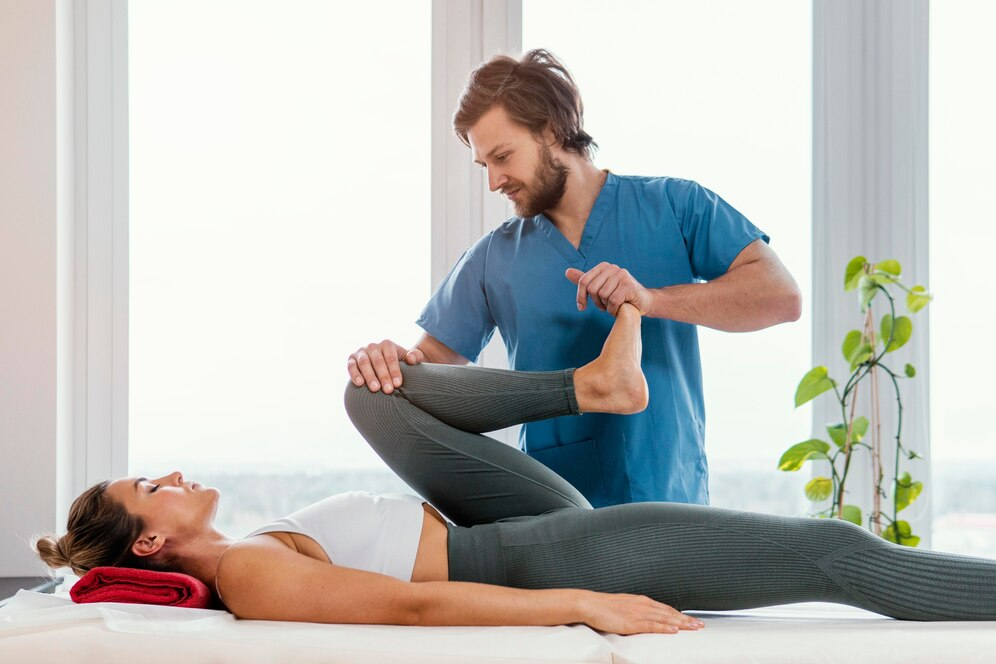
Are there any risks or side effects associated with osteopathy?
Osteopathy is generally safe when performed by a licensed practitioner, with minimal risks or side effects. Common side effects include mild soreness or stiffness after treatment, which typically resolves within a day or two.
Osteopathy is considered safe, but some people may complain of mild soreness, fatigue, and stiffness, particularly a few days after the first session. These symptoms occur as part of a normal adjustment response by the body to the treatment and usually tend to resolve rapidly. Severe risks are rare but may occur if the treatment is performed by an unlicensed or unqualified practitioner. To reduce the risks, it is advisable that patients seek a licensed osteopath who follows proper safety procedures. The study has demonstrated that osteopathy, in itself, has far fewer risks than the often more invasive treatments applied in the medical setup, such as surgery or long-term drug use.
What conditions can osteopathy help treat according to research?
Research shows that osteopathy can help treat conditions such as lower back pain, neck pain, migraines, arthritis, and sports injuries. It is particularly effective for managing chronic musculoskeletal issues and improving overall physical function.
Osteopathy has been the focus of much research regarding its application in treating several muscular-skeletal disorders, particularly chronic pain. There are actually researches that proved the efficacy of osteopathy in the management of back pain in the lower and higher back, migraine, and other types of headaches. It is often utilized in the problems diagnosed with arthritis, sports medicine, and other conditions that are posturally caused.
The holistic view of how one system impacts others in the body means these practitioners are paying attention to overall musculoskeletal health issues related to other systems, and that is where it is useful for patients with more complex, multi-system health issues. Although osteopathy is not a cure for all causes, it undoubtedly plays a prominent role in pain management and improvements in the quality of life among patients suffering from chronic pain.

How widely is osteopathy accepted in the medical community?
Osteopathy is increasingly accepted in the medical community, especially for treating musculoskeletal issues. Many healthcare providers view it as a complementary therapy that can enhance conventional medical treatments, particularly for pain management.
Acceptance of osteopathy has increased among members of the medical community more in the United States, the UK, and Australia. Osteopathy is practiced mostly as part of mainstream healthcare in these countries.
Increasingly, physicians and other healthcare providers have come to understand the basis for osteopathy’s use in therapy for musculoskeletal problems, with some even suggesting such a plan as being encompassing enough for chronic pain or injury recovery. Thus was the effectiveness and safety of osteopathic care verified through such research. Although the popularity of osteopathy has been gaining over the years, the reality is still that it is more prevalent in some countries than in others and less uniform in different healthcare systems because of the varied local laws and medical customs.
Conclusion
New studies continue to support the role of osteopathy in dealing with musculoskeletal pain, for improving mobility, and generally enhancing quality of life. There are few risks associated with osteopathy except for the somewhat increasingly accepted role that osteopathy plays in mainstream medicine as a complementary treatment, and there are important benefits to reconsidering this practice in order to assist with chronic pain or as part of recovering from an injury. Understanding these benefits and scientific basis can guide you through your healthcare decisions.
Osteopath
Osteopathy is a drug-free, hands-on approach to healthcare aimed at improving circulation and correcting abnormal biomechanics throughout the whole body.

Osteopathy generally provides healing from within since it emphasizes the functional and structural attributes of human bodies. Osteopathy uses manual techniques and applies more than just elimination of pain; it increases joint mobility and makes every part of the body feel better. Osteopathy takes care of a wide scope of people, from those who have been chronically in pain to those seeking only preventive care with their self-healing ability promoted in their bodies.
What are the primary healing benefits of osteopathy?
Osteopathy promotes healing by improving circulation, reducing muscle tension, and enhancing mobility. It also helps the body’s natural healing mechanisms, alleviating pain and promoting overall health.
Osteopathy mainly provides numerous healing benefits geared towards restoring balance to the musculoskeletal system. Techniques may include massage on soft tissues and manipulations of joints with the intent of improving blood circulation, reducing muscular tensions, and enhancing the flexibility of the joint.
Many manipulations are helpful in not only removing pain and discomfort but also in facilitating the body’s natural efforts to heal from injuries and chronic conditions. Furthermore, osteopathic treatment promotes a relaxed state, reduces stress levels, and allows the body to regain proper function, thereby leading to better long-term health.
Who can benefit most from osteopathy?
Individuals with musculoskeletal pain, such as back or neck pain, can benefit most from osteopathy. It also helps people with chronic conditions, joint stiffness, and those seeking preventive care.
Osteopathy is of great help to those patients who are facing various musculoskeletal-related issues such as back and neck pain or joint stiffness. It is useful for people in chronically ill conditions, such as arthritis or fibromyalgia, due to the fact that osteopathy generally lowers inflammation and acts as a means of promoting mobility.
Athletes, people rehabilitating from injuries, and even those who do not want to fall victim to chronic conditions can benefit from osteopathy’s concentration on maintaining structural balance as well as improvement of general functionality of the body. Its holistic nature makes it an option that can be applied to a variety of different conditions.

Can osteopathy help with chronic pain?
Osteopathy can help manage chronic pain by relieving tension, improving joint mobility, and enhancing circulation. It is particularly beneficial for conditions like arthritis, fibromyalgia, and long-term back pain.
Osteopathy has really proven to be an effective treatment strategy for chronic pain by the reasons of discomfort that are muscle tightness and joint misplacement. The manual technique also enhances mobility, reduces inflammation and improves blood flow in those areas.
This does not only relieve the symptoms but also develops the future manageability of pain concerning diseases such as arthritis, fibromyalgia, and chronic back ache. It reduces patient dependency on drugs while improving the quality of life.
How does osteopathy benefit athletes?
Osteopathy benefits athletes by improving mobility, preventing injuries, and speeding up recovery. It enhances overall body function, making it a valuable tool for maintaining peak performance.
Osteopathy benefits athletes in multiple ways related to injury prevention and performance. The techniques in osteopathy enhance the flexibility of joints and muscle strength, ensuring that athletes maintain optimal body function and prevent strains or injuries. Furthermore, osteopathy helps in recovering quickly from sports-related injuries by enhancing circulation and reducing muscle tension.
Therefore, osteopathy offers a holistic approach because it does not only treat the existing problem but also helps put the athlete into a better physical condition to carry out his/her activity effectively while recovering rapidly from intense physical activity.
Is osteopathy suitable for older adults?
Osteopathy is highly suitable for older adults, helping with joint stiffness, arthritis, and mobility issues. It promotes overall well-being and improves the quality of life for seniors.
Osteopathy is especially useful in old people who suffer from stiffness of joints, arthritis, and poor mobility. Since the manipulations used in osteopathy are so gentle, it helps reduce pain and improve flexibility with lesser joint functions without needing high-tech interventions.
An osteopathic approach also stabilizes one’s balance and coordination so that the patient is not likely to stumble or fall. In older adults, osteopathy helps improve mobility and allows elderly patients to pursue their routine activities with greater ease, given better circulation and reduced tension in the body.

Can osteopathy help with stress and anxiety?
Osteopathy helps relieve stress and anxiety by reducing muscle tension and improving circulation. The calming nature of the treatment promotes relaxation and overall emotional well-being.
Osteopathy benefits not only the physical conditions but also is utilized to reduce tension and stress. Osteopaths could help to the degree that they can minimize all the physical manifestations of stress by acting upon areas of tension, be it tight muscles or constricted joints.
The place-and-play technique within osteopathy facilitates increased blood flow, decreases cortisol levels, and makes patients relaxed. Relaxation over the nervous system further establishes emotional wellness in persons, aiding them manage stress and anxiety much better.
How does osteopathy improve overall body function?
Osteopathy improves overall body function by restoring balance, enhancing circulation, and relieving tension. This holistic approach supports better health and well-being.
Osteopathy improves overall body function by breaking structural imbalances that cause the body to malfunction. Osteopaths work on the body through physical means to allow the free movement of different joints without causing tension in the muscles as well as improving circulation.
Once the procedure is done, the body acts correctly. By changing in ways to reduce pain as it improves flexibility and supports a body’s natural healing properties, osteopathy excels in promoting healthy living in working ways with effective treatment and prevention among people afflicted with various conditions.
Wrapping Up!
Osteopathy is a healing practice suitable for various health conditions, starting from pain relief and mobility enhancement towards general healthy well-being. Osteopathy ranges from chronic pain to athletes, older adults, and even those who need stress relief. Osteopathy, with the body’s self-healing purposes, promotes better overall health and quality of life. Knowledge of the benefits, it allows the individual to pick this holistic therapy to gain personalized care or long-term improvement.
Osteopath
Osteopathy is a drug-free, hands-on approach to healthcare aimed at improving circulation and correcting abnormal biomechanics throughout the whole body.
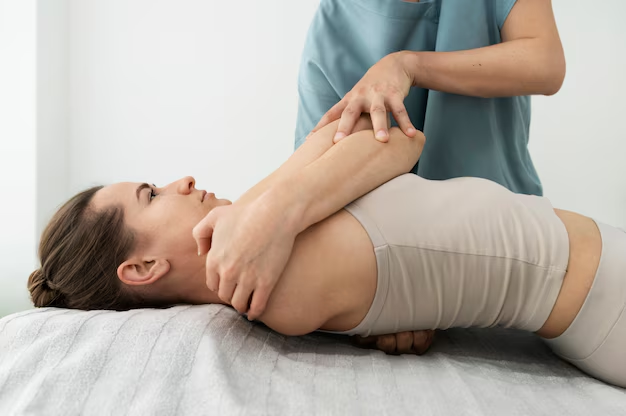
Osteopathy is one of the healing arts that easily finds its place firmly within the holistic paradigm, irrespective of the prevailing biomedical model of medicine. The practice seeks to turn to the patron’s body’s innate tendencies for recovery and thus employs its own non-invasive and wholesome manual procedures. Knowing the basics as well as strategies of osteopathy would thus allow the clients to make appropriate decisions for treatment.
What are the key principles of osteopathy?
The key principles of osteopathy include the body’s ability to self-heal, the interconnection of body systems, and the importance of structural balance. Osteopaths aim to support health through manual manipulation.
There are four main principles of osteopathy. First, all parts are interrelated and interdependent; that is to say, the function of one part has an effect on the whole. This is because the impact or influence of one part can have an effect on other parts. The second says that the body heals if proper support is provided. Thirdly, there is an interplay between structure and function, and imbalances in the musculoskeletal system sometimes cause disease.
Lastly, osteopathic treatment is based on the principle of enhancing the mechanism of self-regulation by the body through structural balance through manipulation and stretching.
How does osteopathy promote self-healing?
Osteopathy promotes self-healing by restoring balance to the body’s structure. When the body’s alignment is corrected, it can function more efficiently, allowing natural healing processes to work effectively.
Osteopathy is facilitated due to the aim of restoring the normal positioning of the musculoskeletal structures. An osteopath has the capacity to mobilize your joints through moving techniques, ease the tightness in your muscles, and improve blood flow via touch.
These manipulations promote the best possible performance of the body as a whole for it to be able to achieve its very best in the healing process. In this level of restoration, osteopathic treatment is known to enhance the body’s natural resistance against infection, mitigate inflammatory processes, and facilitate the cure of diseases or injuries.

What techniques are commonly used in osteopathy?
Common osteopathic techniques include soft tissue massage, joint articulation, manipulation, and muscle energy techniques. These methods help improve circulation, reduce tension, and enhance mobility.
Depending on the patient’s needs, an osteopath has different techniques to offer. Soft tissue massage is such as when a relaxation action on muscles with enhanced blood supply occurs. Seldom is joint articulation an actual movement as motion bringing back a degree of flexibility to the joints through sequential movements of the joints by the osteopath. ‘High-velocity low-amplitude thrust’ is that technique which helps in obtaining the displaced joints and enhancement of the function.
In this, the patient is made to actively contract the muscles deep and further extension and strengthening of the muscles is achieved by using the osteopath’s counter pressures. All the above techniques promote stabilization as well as light healing with the technique.
What conditions can osteopathy treat?
Osteopathy can treat a wide range of conditions, including back pain, joint problems, headaches, and digestive issues. It focuses on improving overall body function through structural balance.
Osteopathy in essence is best suited for cases concerning the musculosketal which includes patients suffering from backache, rotations of accompained joints and even neck ache. But osteopathic treatment does not consist of only this, osteopaths rather treat these types of lesions and associated headaches such as migraine, tension headaches, Irritable bowel syndrome which is a functional digestive disorder as well.
By returning the human functional structure the pressure from the nerves and the structure of organs is minimized making them more functional and relieving chronic pains or the dysfunctions associated with those pains.
How does osteopathy differ from other manual therapies?
Osteopathy differs from other manual therapies by treating the whole body rather than focusing solely on symptoms. It emphasizes structural balance and self-healing through a holistic approach.
Osteopathy differs from other massage therapies by treating the body as a whole system rather than focusing only on specific painful areas. While it may address issues like spine alignment or use hands-on techniques, osteopathy looks at how different parts of the body work together, such as the relationship between spine movement and the limbs.
It often approaches conditions holistically, aiming to support the overall healing process rather than just offering quick fixes. This makes osteopathy distinct from treatments like massage therapy or chiropractic care, which often target specific issues directly.
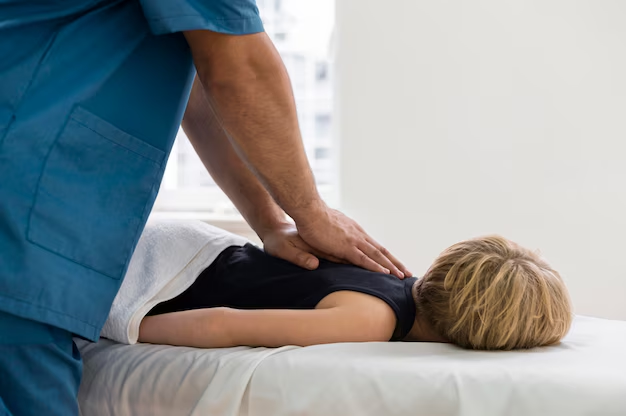
What is the role of cranial osteopathy in treatment?
Cranial osteopathy focuses on gentle manipulation of the skull and spine to relieve tension and improve overall body function. It’s used for conditions like migraines and chronic pain.
Osteopathy requires a specialized technique known as cranial osteopathy; the manipulation is carried out in a gentle manner on the skull, spine, and sacrum to relieve tension, bring about relaxation by improving cerebrospinal fluid flow.
Cranial osteopathy is broadly applied in the treatment for headaches and migraines and all cases that are stress-related. It uses a very subtle yet effective method because restoring balance to the central nervous system facilitates the proper functioning of self-regulating systems in the body.
How does osteopathy improve circulation and mobility?
Osteopathy improves circulation and mobility by releasing muscle tension and realigning joints. These adjustments enhance blood flow and flexibility, supporting better movement and overall health.
Osteopathy improves blood circulation through the release of muscle tension, accompanied by rebalancing the positions of bones to better allow smoother flowing of blood all over the body. Soft tissue massage and joint articulation are also applied to reduce further hindrances to good flow.
An osteopath enables ease and flexibility of movements by stretching and manipulating muscles to make movement easy and flexible. That in itself supports fitness because oxygen and nutrients reach tissues better, hence healing is quicker and less painful.
In Summary
The osteopathic method accords unprecedented importance to the structure and functioning of the human body and relies strongly on hands-on treatment in the process of recovery. The primary fundamental principles of its approach, such as the body’s intrinsic propensity for healing and holism, serve to distinguish it from mainstream medicine.
The patients are expected to understand what osteopathy is and why it has to be promoted as a powerful healing intervention in the treatment of diseases. It has a balanced approach, thus the benefits acquired are long-term in terms of physical appearance and functionality.
Osteopath
Osteopathy is a drug-free, hands-on approach to healthcare aimed at improving circulation and correcting abnormal biomechanics throughout the whole body.
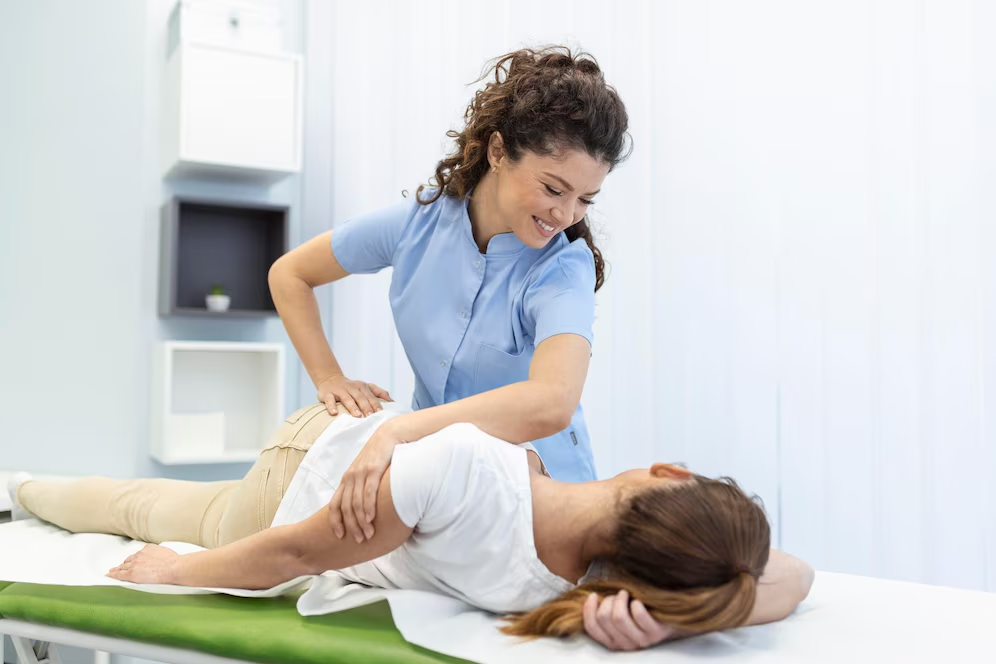
Osteopathy is the method of looking after the body from all sides by giving power and rights to the musculoskeletal system. If you are a newcomer to osteopathy and are interested in knowing what happens in a session, this guide will give you an answer to your common questions regarding the process.
What is the purpose of an osteopathy session?
The purpose of an osteopathy session is to treat the body’s musculoskeletal system and improve its overall function. Osteopaths use manual techniques to reduce pain, increase mobility, and enhance the body’s natural healing ability.
In the osteopathy treatment session, a practitioner aims to align the musculoskeletal problems that affect both the nervous and the circulatory systems. Osteopathy directs its treatment to all areas including muscles, bones, and joints to relieve tension, regain movement, and improve circulation. The osteopath believes that treatment of these areas helps the body generally heal. Lifestyle and emotional states also fall under this holistic approach. It is sometimes applied with conventional treatments for quality of life among people who suffer from chronic pain or mobility.
How long does an osteopathy session typically last?
An osteopathy session typically lasts between 30 to 60 minutes. The length depends on whether it’s an initial consultation or a follow-up treatment, with the first session usually taking longer due to assessments.
This first visit should be taken as the opportunity to spend more time. Taking nearly an hour is not uncommon as the osteopath will take this time for reviewing your health history, conducting an assessment, and discussing your symptoms. The rest of the sessions can be much shorter, at least half an hour or up to 45 minutes, depending on the condition you have. Sessions may also vary in time taken based on how complex issues are and the methods used. Some only target one problem location, while others will treat more than one problem in a more general course.

What happens during the initial consultation in osteopathy?
During the initial consultation in osteopathy, the osteopath will conduct a thorough assessment of your medical history, physical condition, and symptoms. They may also perform a physical examination to identify areas of tension or pain.
They will ask for your health background, including symptoms you are experiencing currently. They will inquire about a history of previous injuries, chronic conditions, diet, and lifestyle factors such as exercises. Next, they would do a physical examination, including an inspection of posture, movement, and noting what parts are painful or restricted. In some cases, gentle manipulations and stretches are applied to identify areas that may need treatment. At the end of the session, a treatment plan can be devised specifically for you – either using manual therapy or other techniques.
Are osteopathy sessions painful?
Osteopathy sessions are generally not painful, but some discomfort may occur during manipulation or stretching of muscles. Any discomfort is typically brief, and the techniques are designed to be gentle and non-invasive.
While most osteopathy treatments are painless, some techniques can cause slight discomfort, especially when your muscles or joints are tight. The osteopath uses mild manipulations, stretches, and massage to relieve tension and assist in improving mobility. Even if you feel discomfort, it is usually only for a short period and is not severe. Osteopaths will always check with a patient during their session to ensure they are comfortable and will modify techniques if that is what the patient requires. The majority of patients report a positive state following treatment, feeling relaxed and not nearly as tense, even though they may have felt minor discomfort during the treatment itself.

How should I prepare for an osteopathy session?
To prepare for an osteopathy session, wear comfortable clothing that allows easy movement, and bring any relevant medical records or information about past injuries. It’s also helpful to be ready to discuss your health history and symptoms in detail.
The appropriate wear needs to be worn, as the osteopath will have to observe posture and movement; hence, loose comfortable clothing is advised. Any recent medical records, scans, or information regarding previous treatments should also be brought along, especially if you have a chronic condition. Explain your medical history in detail about any accidents, operations, or medications you are currently receiving. This will enable the osteopath to come up with a tailored treatment. Hydration and avoiding large meals prior to the session is also helpful in ensuring comfortability during treatment.
Conclusion
An osteopathy session is to incite your inherent healing powers as it deals with musculoskeletal issues. Whether attending the sessions for the very first time or you are already knowledgeable about the treatment, the fact that you know what to expect will make you feel relaxed and secure about the process. Osteopathy was created to work with your body for enhanced mobility, relief from pain, and total well-being.
Osteopath
Osteopathy is a drug-free, hands-on approach to healthcare aimed at improving circulation and correcting abnormal biomechanics throughout the whole body.

Osteopathy was born out of an approach to alternative medicine but, with time, has been accepted and exercised on a universal level. What started small in earlier times has today flourished into the latest scientific research and has even gained formal recognition by systems of health all over the world. The blog will give insight into the remarkable history of osteopathy-from development with key figures who emerged during the starting stages and milestones reflecting the growth of osteopathic education generally.
Who founded osteopathy, and when?
Osteopathy was founded by Dr. Andrew Taylor Still in 1874. He sought an alternative to conventional medicine, focusing on the body’s ability to heal itself. This approach became the foundation of modern osteopathic practices.
In reaction to his dissatisfaction with the effectiveness of conventional medical treatments, Dr. Andrew Taylor Still developed a new system of healthcare. His new system concentrated on the structure of the human body and its own ability to heal; for him, the musculoskeletal system was definitely the basis of health, and structural imbalance would make the body auto-correct itself. This philosophy transformed into the backbone of modern osteopathy, one of the most dominant alternative medicines to date.
How did osteopathy evolve over time?
Osteopathy evolved from a niche practice in the 1800s to a globally recognized healthcare approach. It expanded to include more scientific research and modern healthcare techniques while staying rooted in manual therapy.
Osteopathy has dramatically changed and evolved since its inception in 1874. From its primary focus on manual manipulation it expanded over the years into research science with modern medicine practices integrated. The profession began to gain acceptance in the United States at about the turn of the 20th century, and the first osteopathic medical schools were established.
The stress laid on holistic healthcare became the boom of its popularity worldwide. Indeed, osteopathy is currently practiced in many countries around the world and is being applied through the use of traditional and modern techniques in therapeutic healing.

What was Andrew Taylor Still's philosophy behind osteopathy?
Andrew Taylor Still’s philosophy behind osteopathy centered on the idea that the body has the ability to heal itself. He believed that by correcting structural imbalances, health could be restored without medication or surgery.
The philosophy of Andrew Taylor Still in osteopathy was supported by the premise that the body has a certain capacity for self-healing. He developed the idea that the musculoskeletal system was critical for health and how the creation of imbalance in this system results in disease.
He promoted manipulative corrections of such imbalances, instead of using drugs or surgery, based on the body’s tendency toward equilibrium. It was more an emphasis on prevention, on the whole person, on the tendency of the body to stay in balance when properly aligned.
How did osteopathy gain recognition in the medical community?
Osteopathy gained recognition in the medical community through the establishment of osteopathic medical schools and regulatory bodies. It became more accepted as research supported its effectiveness, and practitioners integrated it into mainstream healthcare.
The journey to its recognition began when the first osteopathic medical school, the American School of Osteopathy, was established in 1892. As more schools were created, osteopathy earned legitimacy as a relatively medical discipline. Scientific research over time that could be used to validate its benefits in musculoskeletal care did its share in earning the confidence of the medical profession.
It was during the middle of the 20th century that regulatory bodies began to formally recognize osteopaths as licensed healthcare providers; they gained their place within mainstream medicine. This profession now works cohesively with more traditional doctors, keeping medical care holistic in scope.

What role did the American School of Osteopathy play in osteopathy's growth?
The American School of Osteopathy, founded in 1892, was pivotal in spreading osteopathy. It trained the first generation of osteopathic physicians and laid the foundation for formal education in the field.
The nucleus part of regulating osteopathy as a specific area of health care was the American School of Osteopathy, founded in 1892 by Andrew Taylor Still. It was the first dedicated ‘school’ that included osteopathy in its curricula. The institution has recruited students from all over the country and brought up the first batch of practitioners who can be called as an osteopathic physician.
Gradually, graduates of theirs opened their practices or established osteopathy schools throughout the USA and then globally. The importance of this institution in the development of osteopathy education cannot be overstated.
How is osteopathy practiced differently around the world?
Osteopathy varies globally, with some countries integrating it into mainstream healthcare, while others view it as an alternative therapy. In the U.S., osteopaths are licensed physicians, whereas in other countries, osteopathy is mainly manual therapy.
The notion of Osteopathy differs broadly amongst the countries. In the United States, osteopathic physicians (DOs) practice surgery and are legally permitted to prescribe parallelly to MDs. Meanwhile, countries like the UK and Australia consider osteopathy more as a physiotherapy practice.
Some countries have more limiting criteria, while others label osteopathy as an alternate or supplementary medicine. Such and many other differences exist but osteopaths are by and large focused on manual therapy as a unifying feature.
In Conclusion
The history of osteopathy has been one of innovation and gradual medical social acceptance from the founding principles of Andrew Taylor Still in 1874 to its current standing around the world. Indeed, it has been interesting to observe how the early history of osteopathic roots-the highpoints such as osteopathic schools’ founding, and the repercussions of the Flexner Report-truly form this holistic therapy. In fact, it has indeed remained a living legacy that has continued into its growth.
Osteopath
Osteopathy is a drug-free, hands-on approach to healthcare aimed at improving circulation and correcting abnormal biomechanics throughout the whole body.

Osteopathy is the holistic approach in healthcare and involves the concern with the structure and function of the body. This form of therapy, through manual means, deals with enhancing recovery and general health improvement.
Osteopaths primarily address the musculoskeletal system to promote the development of the body’s self-healing processes. Awareness of osteopathy theory and benefits can guide one in suitable decision-making about consulting or using this particular therapy for specific health conditions. Some important questions answered about osteopathy below can give you an insight into the approach taken.
What is Osteopathy in healthcare?
Osteopathy is a manual therapy that focuses on the musculoskeletal system. It aims to improve overall health by addressing the body’s structural imbalances. Osteopaths use hands-on techniques to enhance the body’s natural healing process.
Osteopathy is a form of hand medicine that lays stress on the relationship that exists between your body’s structure (muscles, bones, ligaments) and function. Osteopaths have established the fact that the body heals itself when its structure is returned to a balanced state.
The treatment generally has techniques like stretching, massaging, and readjusting the joints with the aim of enhancing circulation, reducing pain, or for total well-being. Osteopathy includes the treatment of several conditions-muscular back and neck pain, digestive disorders and headaches.
How does Osteopathy differ from chiropractic care?
Osteopathy differs from chiropractic care by focusing on the whole body, not just the spine. Osteopaths treat a range of conditions beyond musculoskeletal issues, using a broader approach.
Contrary to chiropractic treatment, osteopathy is a broad-based practice aimed at the medical attention of the entire body instead of just the spine. Osteopathy can control diverse health issues rather than limited to musculoskeletal conditions primarily because of the larger scale of application.
Osteopaths work with spinal adjustments and all the alignments of vertebrae for the purpose of relieving pain and restoring nerve functions. Osteopaths work using a wider range of techniques, including soft tissue massage and joint manipulation to achieve better body efficiency as a whole.

What conditions can be treated with Osteopathy?
Osteopathy can treat conditions such as back pain, headaches, arthritis, and digestive issues. It promotes overall health by improving the body’s structural balance and function.
The practitioners of osteopathy argue that such a treatment system, which comprises musculoskeletal disorders like back and neck pain and joint disorders, is applied to treat much more than just those above. That is to say, heads, migraines, IBS, and respiratory disorders might be treated through the use of this discipline.
Osteopathy involves correcting structural imbalances within the body as a means of facilitating healing and restoring well-being. Many osteopathic patients use it as an adjunctive treatment for chronic conditions that might not be adequately covered by the usual conventional medicine.
What are the main techniques used in Osteopathy?
Osteopaths use techniques like soft tissue massage, joint manipulation, and stretching. These methods aim to relieve tension, improve circulation, and enhance the body’s ability to heal itself.
Osteopathy presents different hands-on techniques to each patient. Soft tissue massage decreases the tension between muscles and improves the circulatory flow of blood, easing the joints with movement, making them more accessible, and facilitating pain relief.
Stretching techniques increase flexibility and alleviate muscular as well as joint strain, bringing balance back to the body and supporting its normal healing processes, making osteopathy versatile therapy.
What should I expect during an Osteopathy session?
During an osteopathy session, the practitioner will assess your medical history, conduct a physical exam, and use hands-on techniques like massage and joint manipulation to treat you.
The process of a standard osteopathy session starts with discussing your medical history and the symptoms that you are facing currently. Following this, the osteopath will perform a physical examination. That is by checking your posture, movement, and areas causing discomfort.
They will involve the patients in hands-on techniques, such as soft tissue massage, joint manipulation, and stretching, according to their research. Sessions range between 30 to 60 minutes, with patients claiming relief or improvement in their conditions immediately after the session. Follow-up visits may be necessary for chronic patients.

Is Osteopathy safe for everyone?
Osteopathy is generally safe for most people, but individuals with certain conditions, like osteoporosis or bone fractures, should consult their doctor first. Practitioners tailor treatments based on individual needs.
Osteopathy is said to be a relatively safe practice for most people, albeit it is always recommended to have a licensed practitioner to undertake this process. For example, those patients found to be suffering from specific diseases, such as osteoporosis, breaks in the bones, or some infection, should consult their general physician before undergoing osteopathic treatment.
Osteopaths medically diagnose all patients to administer appropriate therapy to that patient in a safe manner. If you believe that osteopathy does not suit you, then you should talk about your decision with your osteopath or your family physician.
Wrapping Up!
Osteopathy is the art of working on the structure or parts to improve function, promoting health and treating disease. Essentially, it is a holistic, hands-on approach that focuses on the body’s structure and can be used to alleviate pain, improve mobility, support natural healing processes, and more. Considering its role in treating musculoskeletal conditions, osteopathy’s benefits go far beyond the purely physical planes. Described in the context of chronic pain treatment or general wellness, what osteopathy offers can help you make an informed decision.
Osteopath
Osteopathy is a drug-free, hands-on approach to healthcare aimed at improving circulation and correcting abnormal biomechanics throughout the whole body.

Looking for treatment outside of conventional medicine, patients now hold a bias for structural healing of various medical conditions. At the centerpiece of this practice, osteopathy is the musculoskeletal system of the body and it primarily supports the role of self-healing of the body. In conjunction with other natural health system therapies and alternative medicine, the practice of osteopathy can enhance the overall wellness of the client.
In this case, we will look at how this therapy can be made more effective by combining other orthodox and unorthodox healing practices that have a connection with the mind into a single osteopathy treatment regimen.
How can I maximize the healing potential of osteopathy?
Maximizing osteopathy’s healing potential involves blending it with holistic health care practices, such as natural healing therapies and integrative wellness treatments.
From this analysis and comparison of several documents on osteopathy, it is clear that in order to realize the benefits of osteopathy maximally, it is advisable to resort to more than only one of its forms – simply put, it should be integrated into other strategies of health enhancement; other examples of integrative health practices are, for example, the use of mindfulness stress reduction and osteopathy together.
This is because, through the modalities, the stress and tension in the body is reduced, which increases the ability of the body to heal itself. Moreover, it may prove essential to incorporate adjunct techniques such as herbal medicine into the treatment program as these may enhance squash-how, reduce inflammation and cramping, and enhance recovery from alcohol. This integrative will therefore help to improve the systems by which the provision of treatment for emotional, physical, and mental health occurs.
What lifestyle changes enhance osteopathic healing?

Adopting a holistic lifestyle that incorporates regular exercise, proper nutrition, and natural health remedies will enhance the effects of osteopathic treatment.
In order to enhance healing after an osteopathic treatment, one may also look for sources of mind-body medicine. It is important to engage in moderate physical activities, like stretching bonds with little stress; they can sustain the musculoskeletal structure repositioned by osteopathy.
Moreover, eating and following an appropriate diet together with herbal medicine will assist healing even more. At the same time, stress management practices such as mindfulness or meditation help keep focused mental energy and emotional poise, which help to keep the body relaxed, a state crucial for the healing process. All these efforts promote the well-being of patients under osteopathy treatment.
Can combining osteopathy with other therapies improve results?
Yes, combining osteopathy with alternative healing methods, such as energy healing therapy and herbal medicine, can improve treatment outcomes.
For other forms of therapy to be effective, osteopathic treatment establishes a physical base around which piles of healing can be carried out. Diseases and disorders affecting the body and its various aspects can heal better when osteopathy is used in conjunction with other methods like energy healing therapy or even acupuncture.
Such natural healing practices are commonly provided together with osteopathy to make the treatment more effective and balanced. This combination assures that the physical architecture and regulatory energy pattern of the body are both well catered for enhancing wellness and healing.
How does mindfulness support osteopathic treatment?
Mindfulness and holistic health practices enhance osteopathy by promoting body awareness and relaxation, which allows for deeper physical healing.
Mindfulness skills support the patient’s ability to perceive her or his body better, so that the patients cooperate more optimally when being worked on osteopathically. With the belief of reducing stress and instilling calmness, mindfulness prepares the body to recover adequately after undergoing osteopathic manipulation.
A blend of both physically and mentally oriented approaches encourages well-being through Interventions for the mind and the body. There is a mind game played in the sense that pain perception can also be controlled through some mindfulness techniques, and this assists with osteopathic manipulation reducing too much stress and thus recovering more quickly.
What role do natural healing therapies play in osteopathic care?
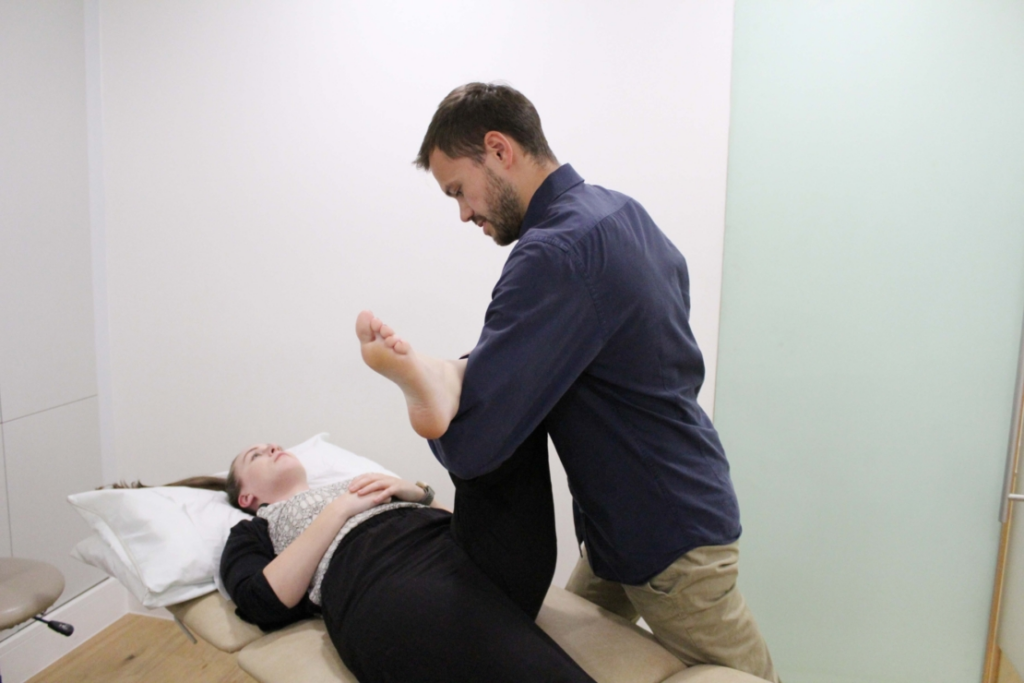
Natural healing therapies, like herbal medicine and energy healing therapy, enhance osteopathic care by supporting the body’s innate healing abilities.
It is evident that there are some advantages in integrating the other forms of natural healing therapies with osteopathy since they are also able to address the energetic as well as biochemical aspects of healing.
For this reason, herbalism improves the adjustments by supplying the tissues with anti-inflammatory agents that support reparative processes while the basic structure is restored through the efforts of the osteopath.
At the same time, energy healing therapy is aimed at the energy flow, facilitating the release of energy blockage that may interfere with the physical restoration. It addresses the structural instability and brings much relief to the mechanical therapy by provision of the inherent healing potential.
How does osteopathy contribute to whole-person care?
Osteopathy contributes to whole-person care by addressing both structural imbalances and functional issues, promoting overall wellness and healing.
Under the practice of complementary medicine, osteopathy focuses on the repair of the body in the second tone, which is based on the support of the musculoskeletal system; therefore, it is one of the standing elements of complementary medicine. Nonetheless, it is this advantage that sets it apart from other practices in that it is not isolated.
Physical osteopathy heals and maintains the body’s joints, which makes the use of alternative medicine, such as herbal or energy medicine, more effective. These alternatives and moving integrations bring out a holistic health treatment mechanism where the whole body, including emotions and mind, are treated at the same time, thus effective and affordable treatment with lasting effects.
Can osteopathy improve holistic pain management?
Osteopathy is effective in holistic pain management by treating the underlying causes of pain and working alongside natural health remedies.
Osteopathic treatment is well suited for those with long-term pain convictions since it targets the wrong posturing of the body that puts stress on the nerves, joints or muscles. With the practice of herbal medicine or energy healing therapy alongside osteopathy, it is possible to control pain without undergoing operative procedures or taking too many pain-relieving medications. This not only consents pain relief but also allows for self-healing and enhancement therefore providing a better standard of living.
Conclusion: Embrace a Holistic Approach to Osteopathy
Because osteopathy can be integrated with other healing arts or natural methods, it is very effective in a whole person’s care. Whether you are interested in focusing on holistic pain rehabilitation or have a goal of fostering the healing capabilities of your body, osteopathy can be the backbone.
Include practices around focus on healing, as well as herbal medicines and be in a wholesome state and enjoy the benefits that come with osteopathy. Search for holistic therapy near me to discover what combinations of therapies will suit your overall health condition.
Osteopath
Osteopathy is a drug-free, hands-on approach to healthcare aimed at improving circulation and correcting abnormal biomechanics throughout the whole body.
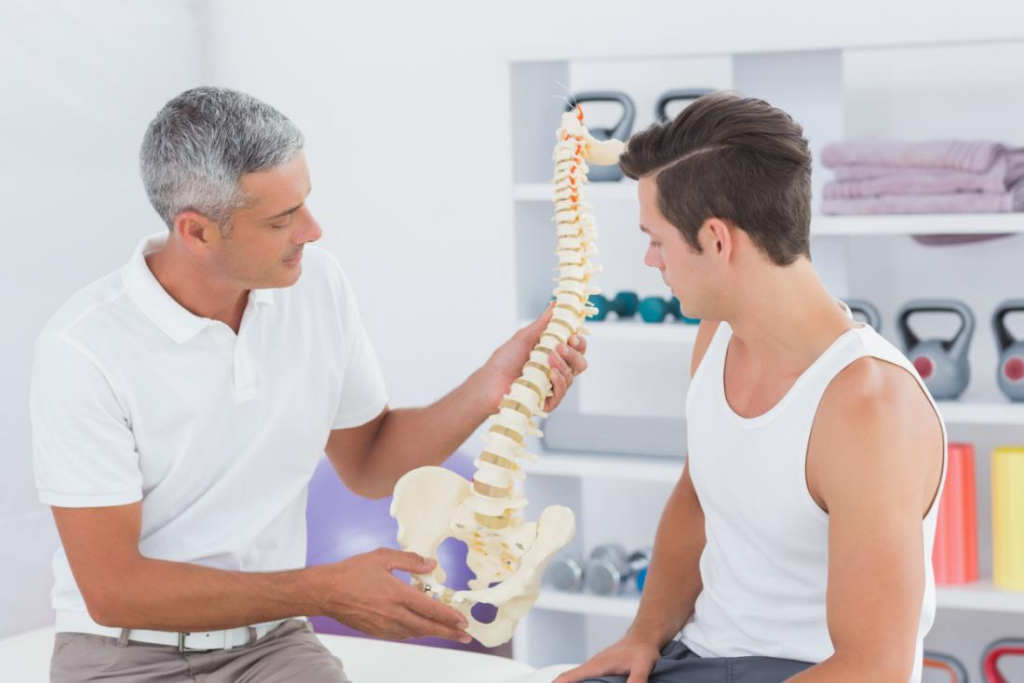
In the last two decades, the intermingling of osteopathy with other complementary medicine and natural healing systems has gained growing acceptance. Such a blend of approaches paves the way towards whole-person care wherein physical health, emotional well-being as well as mental health are considered a part of health as a whole.
It doesn’t matter if you are interested in enhancing your mind-body balance or you are looking for an integral therapeutist and osteopathic therapy – osteopathy is a solid basis for improving health and promoting healing. Next, let us investigate the common concerns about osteopathy integration with other practices embraced by progressive healthcare facilities.
How does osteopathy complement holistic health care?
Osteopathy complements holistic health care by addressing the relationship between the body’s structure and its function, supporting natural healing therapies.
Osteopathy is used in a complementary medicine setting with the aim of treating and helping the body to heal itself from within by correcting the positioning of the body’s framework, that is the musculoskeletal system. This facilitates the improvement of health, as all systems within the body function in an optimal manner.
Osteopathy is a natural way of life as it embraces the mind and body as one and does not aim at mere symptomatic treatment but the treatment of the various underlying issues in a patient. It can also be recommended as a last-option treatment while combined with other alternative healing types, such as energy medicine therapies, and herbal medicine treatments, osteopathy boosts the body’s defense mechanisms and encourages health for many years to come.
Can osteopathy be combined with natural healing therapies for better results?
Yes, osteopathy can be combined with natural healing therapies like herbal medicine or energy healing therapy to improve outcomes.
Treatment is more complete when patients receive both osteopathic manipulative treatment and natural health remedies. The body is physically balanced with osteopathy, while the energy content in the body is supported with natural health or medicine, creating a multi-faceted system of treatment.
For instance, at the end of an osteopathic treatment, one can use herbal medicines for wellness in recovery from surgery to reduce swelling and increase immunity. What is therefore concluded is that all the discomforts and diseases can be dealt with much faster and in a more effective way provided all those described procedures and remedies are applied together.
What are the benefits of integrating osteopathy with complementary and alternative medicine?
Integrating osteopathy with complementary and alternative medicine offers holistic therapy benefits by addressing both the structural and energetic aspects of health.
Osteopathy, in conjunction with some other modalities of complementary medicine, including acupuncture, chiropractic care among others; provides a comprehensive form of treatment.
For instance, if the physical aspect of osteopathy works on aligning the body by repositioning bones, then acupuncture will activate the body’s energy by overcoming any energy spars. This is also suitable for people who desire to be treated from head to toe as both physical as well as energy dimensions are employed.
How does osteopathy support integrative wellness treatments?
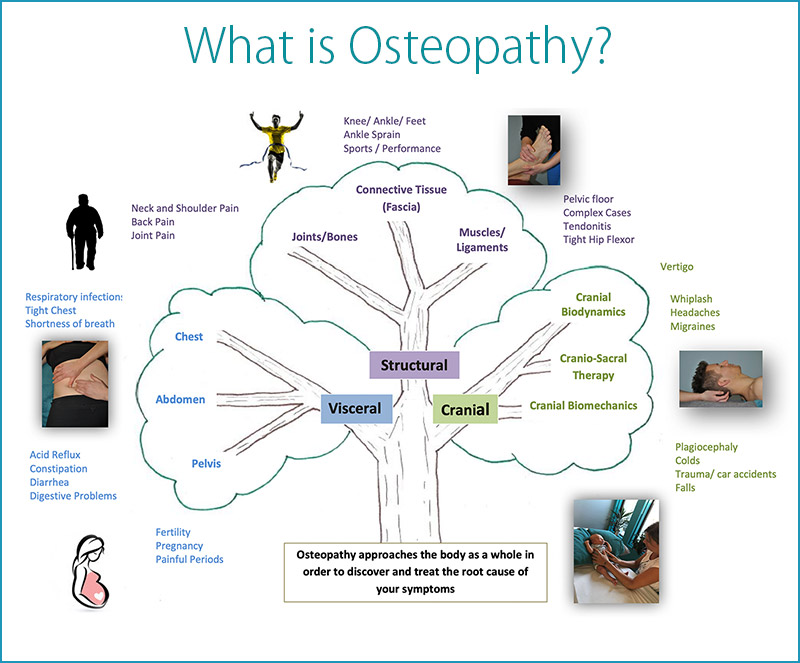
Osteopathy supports integrative wellness treatments by aligning the body’s physical systems, which helps other therapies, like herbal medicine or mindfulness practices, work more effectively.
In the context of integrative health practices, one of the first steps usually undertaken for the purpose of restoring the structural equilibrium of the whole organism is osteopathy. After such a plight, other natural centers of healing can be fortified.
For instance, osteopathy treatment helps herbal medicine to be more effective as the herbal nutrients and medicinal properties assimilate better with enhanced blood circulation and less tension in the body. This guarantees that healing methods are combined, aiming for the best results.
What role does osteopathy play in holistic therapy near me?
Osteopathy plays a vital role in holistic therapy near me by offering non-invasive treatment that works in tandem with natural health remedies.
Most of the healing centers that therapeutically practice holistic therapy have as well integrated osteopathy into the range of services they provide. It extends to other non-conventional healing techniques, including massage therapy, acupuncture, and energy healing. Osteopathy plays a key role in facilitating the expected outcomes of other forms of therapy. Patients have been able to achieve better outcomes, especially when such therapies are used with osteopathy as part of the wellness and healing exercises.
How does osteopathy improve mindfulness and holistic health practices?

Osteopathy improves mindfulness and holistic health practices by enhancing body awareness, which supports better emotional and mental balance.
The physical alignment received through osteopathy makes individuals pay attention to their body needs hence enhancing the practice of non-judgmental focus. Once the physical discomforts are taken care of and relaxation promoted, osteopathy creates a foundation through which the body occupies a deeper level of wellness.
With such heightened awareness, there are additional enhancements that can improve the practice of meditation and mindfulness and holistic health approaches creating a scenario where the healing of the whole person is achieved as mind and body work together.
Can osteopathy assist in holistic pain management?
Osteopathy assists in holistic pain management by targeting the root cause of pain in the musculoskeletal system while supporting natural health remedies for long-term relief.
Osteopathy’s main purpose is to treat the body’s structure and harmony to eradicate chronic pain syndromes without the use of drugs. When used in conjunction with herbal medicine aimed towards holistic treatment or energy healing therapy, osteopathy becomes an effective treatment method for managing pain in a natural way.
Besides relieving painful symptoms, such people do not only relieve symptoms but also enhance healing, thereby improving the general well-being of the person though less depends on available healthcare services.
Conclusion: The Synergy of Osteopathy and Complementary Therapies
There is the possibility that osteopathy may easily be combined with other natural restorative methods and some branches of complementary medicine. The methods of osteopathy are suitable to support unity between mind and body and to reinforce other non-conventional and non-invasive approaches.
If you are looking for how to integrate holistic therapies into your life or you are searching for holistic surroundings, you have come to the right place with osteopathy. The trend in health care is evidently going to more integrated methods of providing wellness therapeutics wherein osteopathic treatments will be some of the core therapies for healing in a natural way.
Osteopath
Osteopathy is a drug-free, hands-on approach to healthcare aimed at improving circulation and correcting abnormal biomechanics throughout the whole body.
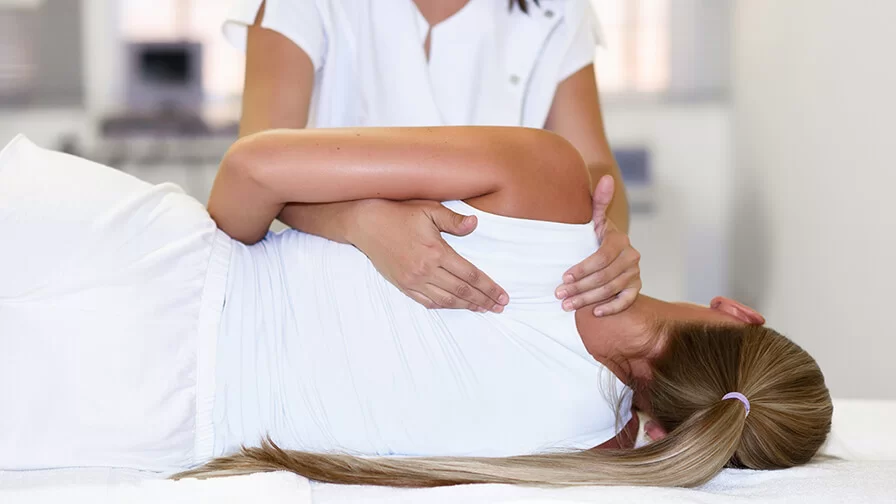
Ever wondered if osteopathy could be the solution to your chronic pain or musculoskeletal issues? This form of manual therapy, which focuses on strengthening and treating the entire body’s musculoskeletal framework, has become popular due to its holistic approach. It is not only about the spine or joints, but osteopathy targets improving overall health through manipulating and reinforcing the musculoskeletal system such as muscles, joints, and spine. Although this treatment method can offer various advantages it also has its own shortcomings. Read on for a detailed analysis of osteopathy’s pros and cons.
What are the main benefits of osteopathy?
Osteopathy can benefit by improving joint mobility, reducing pain, and enhancing overall well-being. It addresses musculoskeletal issues without medication and supports the body’s natural healing processes. Osteopaths tailor treatments to individual needs, promoting recovery and preventing future injuries through personalized care plans.
Osteopathy is known to be a system that handles the whole body rather than treating local symptoms, which is why it has always enjoyed a good reputation. Tension will reduce, blood flow will improve, and a person will be able to restore better posture. Osteopathic treatments may provide help with the above-mentioned conditions such as pain in the back, headaches, and sports injuries- without applying medication.
What are the potential drawbacks of osteopathy?
Potential drawbacks of osteopathy include temporary soreness, limited insurance coverage, and the risk of ineffective treatment for certain conditions. Osteopathy may not address serious medical issues requiring conventional medical intervention.
A health professional needs to be consulted to know when osteopathy can be used. It was observed that although osteopathy was relatively safe, still some soreness or feeling of discomfort might be shown in some patients after the treatment.
One needs to be aware that this system can be applied to only those diseases or disorders for which it is indicated. Moreover, it has little effect on severe injuries or dangerous diseases. Also, insurance companies have different policies for osteopathic care, which in turn affects access.
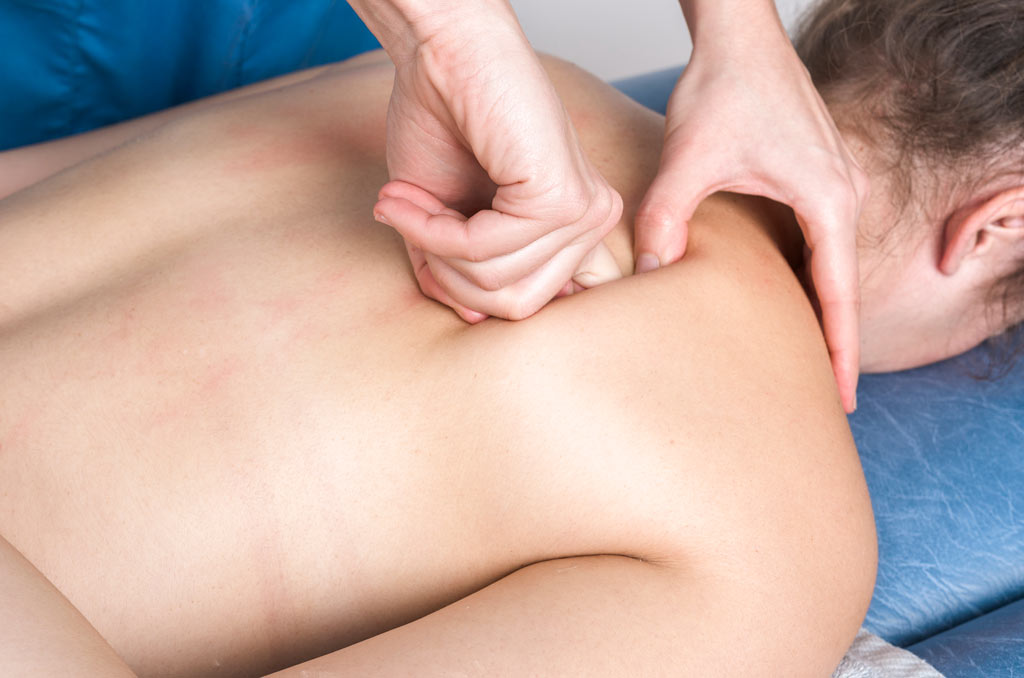
How does osteopathy differ from chiropractic care?
Osteopathy focuses on the whole body, using manual techniques to treat muscles, joints, and connective tissues, while chiropractic care primarily targets spinal adjustments to alleviate pain and improve function.
Osteopathy treatment approaches, such as lifestyle and postural advice, have been encompassed in osteopathy treatment. While osteopathy and chiropractic care both deal with manual manipulation, osteopathy is more concerned with the holistic approach to how different systems of the body interrelate with one another.
Chiropractic practitioners are more concerned with the sphere of spinal health and alignment in order to resolve different nerve-related problems. Such methods of treatment for osteopaths as stretching, massaging, or mobilization can be applied to achieve universal health.
Can osteopathy help with chronic pain management?
Yes, osteopathy can help manage chronic pain by improving mobility, reducing muscle tension, and enhancing circulation. It offers a holistic approach to pain management, addressing underlying causes and promoting overall well-being.
Treatment plans that are tailored to each individual help provide long-lasting relief. Osteopathy can help in cases of chronic conditions like back pains, arthritis, and even fibromyalgia.
Osteopaths restore balance in the affected areas by finding out those with restriction or imbalance to reduce inflammation and improve function. Regular sessions will bring improved pain management, enhanced flexibility, and an overall better quality of life.
Is osteopathy suitable for children and infants?
Osteopathy is suitable for children and infants, offering gentle techniques to address issues like colic, sleep disturbances, and developmental concerns. Pediatric osteopathy focuses on supporting healthy growth and development.
Osteopaths use light pressure and movements tailored to the child’s needs. Pediatric osteopathy benefits infants and children with conditions such as colic, difficulties related to feeding, and sleep problems.
Techniques are modified to make them safe and comfortable for young patients. Osteopaths treat the whole child, looking at the physical and emotional aspects of the child in order to promote growth and healthy development.

How can osteopathy improve athletic performance?
Osteopathy can improve athletic performance by enhancing flexibility, preventing injuries, and speeding up recovery. It addresses musculoskeletal imbalances, optimizing movement and function.
A tailor-made treatment for the athlete forms the individual needs, which help in achieving better performance with optimal care and prevention strategies. Osteopathy helps athletes to improve joint mobility, muscle flexibility, and circulation. By correcting those areas with tension or imbalance, osteopaths can help athletes to remain in good physical function and avoid injury. Regular osteopathic sessions bring about the best recovery both from training and competing, and this means performing all the better at everything, given any individual’s highest ability.
What conditions can osteopathy effectively treat?
Osteopathy effectively treats conditions like back pain, joint pain, headaches, and postural issues. It offers relief for sports injuries, digestive problems, and stress-related symptoms. Osteopathy’s holistic approach addresses both physical symptoms and their underlying causes for comprehensive care.
Osteopathy is helpful in a large number of conditions ranging from musculoskeletal complaints, for example, back and neck pains, to headaches and migraines. It could further help in gastrointestinal problems, respiratory disorders, and most importantly, tension arising due to stress in a patient. The dealing attitude of osteopaths is with enhancement of self-healing abilities related to situations of both chronic or acute kinds.
The Key Takeaway
Pros and cons should be taken into account carefully before opting for osteopathy. This kind of treatment offers significant advantages as regards pain relief and general health due to its comprehensive approach towards musculoskeletal problems which are chronic in nature. However, it is not applicable universally but rather depends on specific cases of diseases besides being an expensive undertaking. You might want to contact a certified osteopath to talk about your needs and see if you should go ahead with going through this process or not because there is no one-size-fits-all solution for particular health problems connected with this therapy.
References
Osteopath
Osteopathy is a drug-free, hands-on approach to healthcare aimed at improving circulation and correcting abnormal biomechanics throughout the whole body.
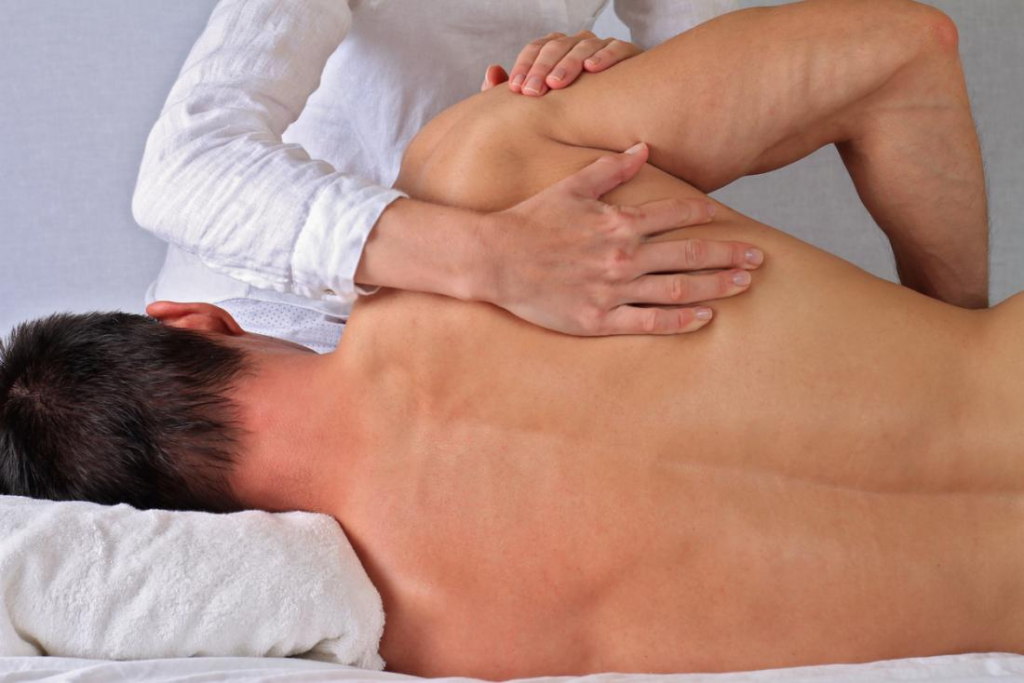
When people discuss alternative medicine and physical therapy, they inevitably talk about osteopathy and chiropractic care. Both of them are oriented towards the musculoskeletal system and aimed at improving health through the use of manual methods. Nonetheless, despite their resemblances, these approaches have unique viewpoints, techniques and treatments.
What Are The Historical Origins of Osteopathy and Chiropractic?
Osteopathy, founded by Andrew Taylor in the 19th century, emphasizes holistic healing by mobilizing the body. Chiropractic care, introduced by Daniel David Palmer in 1895, focuses on spinal alignment.
Osteopathy was established by an American medical doctor, Andrew Taylor, in the 19th century. He thought that the body had its own healing powers inside it.
Still, this approach was holistic since he believed all organs were connected. His proposed treatment method thus stressed the significance of mobilizing bones, muscles, and joints so that the natural curative processes could take place within the body.
Osteopathy came first, followed by Chiropractic care from Daniel David Palmer in 1895 who hypothesized spinal misalignments known as “subluxations” were behind many health issues.”
Palmer’s interest lay mostly in the spine. He also formulated certain adjustment techniques with the aim of correcting these misalignments which would help restore the proper functioning of the nervous system.
What Are The Philosophical Foundations of Osteopathy and Chiropractic?
Osteopathy philosophy emphasizes body unity, self-regulation, and musculoskeletal balance for natural healing. Chiropractic focuses on spinal alignment to restore nervous system function and improve health.
The assertion that osteopathy is a principle grounding the body as a unit with all its systems interconnected. Osteopaths have faith that the structure and function of the body are interrelated and that the inherent capacity for self-regulation and self-healing exists in the body.
Its rational approach respects the fundamental principles of body unity, self-regulation, and functional relationships.
In order to heal naturally, osteopaths deal with musculoskeletal imbalances and overall dysfunctionality in their clients’ bodies.
Chiropractic philosophy focuses on how the spinal cord relates to overall health. Chiropractors believe that misalignments in the spine can lead to nervous system dysfunction that results in various diseases.
By making adjustments to people’s spines one can return displaced vertebrae and reestablish normal nerve supply of the entire body including organs themselves and related parts. Correcting these misalignments through spinal adjustments can restore proper nervous system function and improve overall health.
What Is Their Difference In Education and Training of Osteopaths and Chiropractors?
Osteopathic physicians complete a medical education, including OMT training, and can specialize. Chiropractors focus on spinal health through specific training but cannot prescribe or perform surgeries.

In the United States, osteopathic physicians receive an education similar to that of MDs. They study for a four-year undergraduate degree followed by four years of osteopathic medical school. This education includes comprehensive learning of anatomy, physiology, and pathology and training in Osteopathic Manipulative Treatment (OMT)
After they finish their education, osteopathic physicians must take licensing examinations and can choose any field of medicine to train in as specialists.
On the other hand, chiropractors have a different training approach. The pathway to becoming a chiropractor involves an undergraduate degree, four or five years of college focusing on chiropractic studies, and supervised clinical experience
Chiropractic education highlights the importance of overall wellness especially related to spinal health. Chiropractors are not allowed to write prescriptions or carry out surgeries in most jurisdictions.
Are Their Differences In Osteopathy and Chiropractic Treatment Approaches?
Osteopathic treatment uses OMT, soft tissue techniques, cranial and visceral manipulation, and muscle energy techniques. Chiropractic care focuses on spinal adjustments, soft tissue therapy, exercises, and electrical stimulation.
Osteopathic treatment, as a whole-body approach, is holistic. A variety of techniques are employed by osteopaths, which included Osteopathic Manipulative Treatment (OMT), soft tissue techniques, cranial osteopathy.
Visceral manipulation entails light manipulation of internal organs to improve their functioning. Muscle Energy Techniques enhance the range of motion in joints and muscle function using the patient’s unique contractions.
Additionally, osteopaths may also use diet counseling, lifestyle advice, and exercise prescriptions in their management plans.
The primary focus of chiropractic care is the spine’s impact on the nervous system. The main approaches used include spinal manipulation, and soft tissue therapy,etc.
Additionally, they may also provide dietary advice and lifestyle suggestions related to ergonomics and posture.
How To Select Between Osteopathy and Chiropractic Care?
Choose osteopathy for holistic, whole-body care and diverse techniques. Opt for chiropractic if you seek spinal adjustments and focused nervous system treatment.

When choosing between osteopathy and chiropractic care, there are some factors that should be kept in mind.
Chiropractic care may be more focused on you if you have a specific spinal problem. For general or systemic health problems, however, the holistic approach to osteopathy might be useful.
If you want spinal adjustment-based treatment then choose chiropractors. However, if you want soft tissue work and visceral manipulation then osteopaths can be more suitable.
In the US, for example, an osteopath (D.O.) is appropriate if one needs a practitioner who can prescribe medications or perform minor operations for them.
Some individuals may feel at ease with only one technique over another. Select a treatment method that matches well with your personal health beliefs.
Notably, both osteopaths and chiropractors are trained professionals capable of providing valuable healthcare services.
Is massage therapy better than osteopathy?
Massage therapy focuses on muscle relaxation and pain relief, while osteopathy offers a holistic approach, including structural adjustments. The choice depends on specific needs and goals.
Different health conditions are dealt with by osteopathy while massage therapy deals mainly with muscle tension release and relaxation. The choice will depend on individual health status and goals.
What are the pros and cons of osteopathy?
Pros include a holistic approach, diverse techniques, and emphasis self-healing. Cons include not being covered by all insurance plans, effectiveness varies, some techniques may be uncomfortable.
Osteopathy is an alternative treatment that provides relief to the whole body, minimizes pain, increases movement, and betters general well-being.
It may be costly and might need many appointments. Results may differ from person to person.
Are osteopaths worth it?
Osteopaths can be worth it for holistic care and personalized treatment, especially for musculoskeletal issues. Effectiveness depends on individual needs and conditions.
There are situations in which osteopaths would be worth considering for those who want a non-invasive way of treating musculoskeletal problems and improving mobility and wellness. However, this holistic remedy only works if the patient is sick enough for such medicine or has found a good osteopath who can treat him properly.
Additionally, one must evaluate prices together with possible insurance coverage.
Conclusion
Osteopathy distinguishes itself from chiropractic care in terms of philosophy and practice. By contrast, chiropractic focuses on spinal health with regard to overall health while Osteopathy adopts a more comprehensive approach to healing that considers the entire human body in its practice area. The final decision on whether to go for osteopathy or chiropractic depends on individual needs, desires and objectives.
